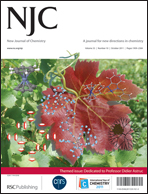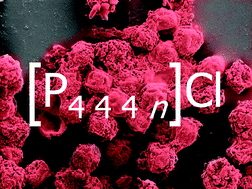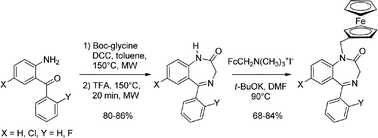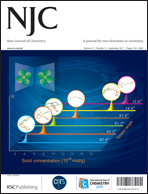NJC is delighted to introduce this issue in honor of Didier Astruc, on the occasion of his 65th birthday. The outside front cover highlights molecules from 5 of the articles in this issue, placed on a background of grape leaves and vineyards (in honor of Didier’s Bordeaux location).

We’ve invited his colleagues, Jean-René Hamon, Jean-Yves Saillard and Jaime Ruiz, to introduce this special issue and highlight Didier’s many outstanding scientific achievements in a wide range of research areas, including organometallic chemistry, catalysis, molecular chemistry, dendrimers and nanostructures.
Introduction to the themed issue in honour of Prof. Didier Astruc. A success story from electron reservoir complexes to dendritic molecular nanostructures, New J. Chem., 2011, 35, 1931-1932; DOI: 10.1039/C1NJ90032C
The articles presented in this themed issue of NJC address recent developments in material science, cancer research, organometallic complexes, metallodendrimers and preparation of nanostructures, amongst other themes. New ideas are presented, some long-held views are strengthened and others are questioned.
In all, there are 56 articles including 2 Focuses, 4 Perspectives, 6 Letters and 44 Full papers. The high quality of research presented exemplifies what scientists are able to achieve, and Didier Astruc certainly occupies a leading position among them.
Some of the articles in this themed issue:
A new series of ferrocifen derivatives, bearing two aminoalkyl chains, with strong antiproliferative effects on breast cancer cells; Pascal Pigeon, Siden Top, Anne Vessières, Michel Huché, Meral Görmen, Mehdi El Arbi, Marie-Aude Plamont, Michael J. McGlinchey and Gérard Jaouen; New J. Chem., 2011, 35, 2212-2218; DOI: 10.1039/C1NJ20192A
Synthesis of spin crossover nano-objects with different morphologies and properties; Alexey Tokarev, Lionel Salmon, Yannick Guari, Gábor Molnár and Azzedine Bousseksou; New J. Chem., 2011, 35, 2081-2088 DOI:10.1039/C1NJ20218A
A meta-xylenediamide macrocycle containing rotaxane anion host system constructed by a new synthetic clipping methodology; Nicholas H. Evans, Christopher J. Serpell and Paul D. Beer; New J. Chem., 2011, 35, 2047-2053; DOI: 10.1039/C1NJ20109C

The inside front cover by Hiroshi Nishihara and co-workers (University of Tokyo) represents their work on 3-ferrocenylazobenzene (3-FcAB) containing polymer particles, envisioning their potential application to act as nano-sized photo-memories or switches.
Synthesis of photo-switchable 3-FcAB-modified polymer particles by Kosuke Namiki, Masaki Murata, Shoko Kume and Hiroshi Nishihara; New J. Chem., 2011, 35, 2146-2152; DOI: 10.1039/C1NJ20189A
A symposium in honor of Didier Astruc will be held in Bordeaux (December 1–2, 2011) at which Yves Chauvin (2005 Nobel Laureate) will present this themed issue to Didier. The two-day symposium program will include plenary lectures by Henri Kagan and Jean-Pierre Sauvage, 25 other lectures, as well as a Grand Public discussion with Yves Chauvin.
Don’t miss the October themed Issue 10, available online!
 In this NJC paper C. S. Pereira and co-workers (collaborative research work between the Universities in the UK and Portugal) have investigated the toxicity of quaternary phosphonium ionic liquids towards fungal conidia Aspergillus nidulans.
In this NJC paper C. S. Pereira and co-workers (collaborative research work between the Universities in the UK and Portugal) have investigated the toxicity of quaternary phosphonium ionic liquids towards fungal conidia Aspergillus nidulans.















